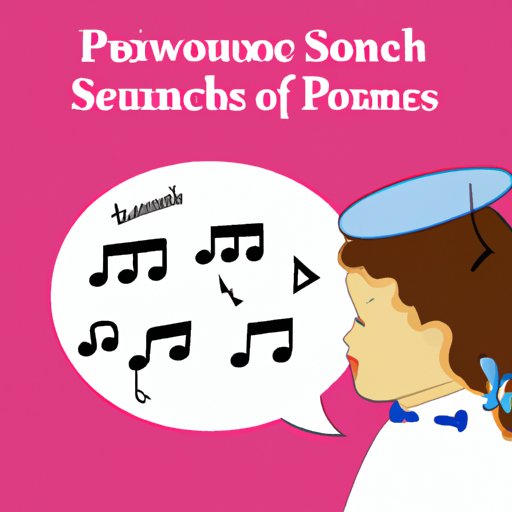Introduction
Phonemic awareness is a vital skill that lays the foundation for reading and writing success in young learners. It is the ability to hear, identify, and manipulate individual sounds (phonemes) in spoken words. It is an essential precursor to phonics, the relationship between letters and sounds, and an essential building block for decoding words. This article will explore the definition and importance of phonemic awareness, and how educators and parents can help young learners develop this vital skill.
Understanding Phonemic Awareness: The Building Blocks of Literacy
Phonemic awareness refers to the ability to hear, identify, and manipulate the individual sounds (phonemes) in spoken words. It involves oral language skills and an awareness of the constituent sounds in words. Without this skill, learners may struggle to decode words and spell accurately.
Phonemic awareness should not be confused with phonics, the relationship between letters and sounds. While phonics is also essential in developing literacy skills, it is the application of knowledge about letters to reading and writing. Phonemic awareness is a crucial prerequisite to mastering phonics.
The ability to hear and manipulate sounds in words is a critical skill for reading, writing, and communicating. It enables learners to break down words into their constituent sounds, and it helps them store sound-symbol relationships in their memory, which improves reading fluency and comprehension.
10 Activities That Help Develop Phonemic Awareness in Young Children
Developing phonemic awareness skills can be enjoyable and engaging for young learners. There are various activities parents and educators can use to promote this essential skill. A few examples of phonemic awareness activities are:
- Sound Matching: Ask children to match words that begin with the same sound (e.g., cat, cake, car).
- Rhyming Games: Read a book with rhyming words and ask the child to provide more rhyming words.
- Segmenting Words: Break down words into individual phonemes, such as “c-a-t” for the word “cat.”
- Syllable Clap: Clap out the syllables in words and ask the child to identify the number of syllables.
- Phoneme Counting: Ask the child to count the number of phonemes in a word (e.g., “sun” has three phonemes, /s/, /u/, and /n/).
- Odd One Out: Provide a group of words and ask the child to identify which word does not rhyme or start with the same sound as the others.
- Phoneme Deletion: Ask the child to remove the first sound of a word or say a word without a particular sound (e.g., “Say ‘fun’ without the /f/”).
- Story Time: Read a book and ask the child to identify words that rhyme or start with the same sound.
- Word Blending: Blend sounds together to make words, such as /c/ /a/ /t/ for “cat”.
- Alliteration Activities: Read a book with alliteration, such as “Silly Sally sells seashells.”
These phonemic awareness activities can be fun, interactive, and engaging, helping to build early literacy skills.

The Science Behind Phonemic Awareness: How Our Brain Processes Sounds
Phonemic awareness is strongly linked to the cognitive processes involved in language and sound development. Understanding how our brains process sounds and language can help teachers and parents develop literacy skills in young learners.
Phonemic awareness involves the activation of specific areas in the brain, including Broca’s area and the inferior parietal lobule. These regions are responsible for processing and manipulating sounds and language comprehension. Research has also shown that the white matter or connections between these regions in the brain are critical in language and sound processing.
Developing phonemic awareness is thus essential for building cognitive connections and strengthening the neural pathways that support literacy skills such as reading, writing, and spelling.
Top 5 Strategies for Teaching Phonemic Awareness to Struggling Readers
Some children may need extra support in developing their phonemic awareness skills. Parents and educators can use specific strategies to help these struggling readers.
- Start with Listening: Encourage learners to listen closely to spoken language, identifying attention to the sounds in words.
- Use Multisensory Approaches: Combine visual, auditory, and kinesthetic learning to help children learn more effectively.
- Explicit Instruction: Provide clear, explicit instruction in phonemic awareness skills, making sure to include lots of practice opportunities.
- Small Group Work: Use small group work to provide focused instruction and more personalized support.
- Assessment and Monitoring: Regular assessment can help track progress and identify areas where extra support may be necessary.
These strategies can be used in various settings, including the classroom, home, or other learning environments.
The Role of Phonemic Awareness in Multilingual Reading and Writing
Phonemic awareness skills vary across languages. Phonemes in one language may not correlate with phonemes in another language, even though they use the same alphabet.
Schools with multilingual students must be aware of these differences, as phonemic awareness instruction must be adapted to match the specific language’s phonemy. For example, in the English language, the letter “c” can produce the sounds /k/ and /s/. But in Spanish, the letter “c” always has the sound /k/.
Learning to read or write in a second language can be challenging, which is why phonemic awareness is a critical skill for bilingual learners.
Debunking Myths About Phonemic Awareness: What the Research Says
There are several misconceptions about phonemic awareness that may influence teaching practices. However, research has debunked these myths, as phonemic awareness is critical for developing early literacy skills. Some of the common myths related to phonemic awareness include:
- Phonemic Awareness is the Same as Phonics: Although both skills are essential for literacy, they focus on different aspects of language development.
- Phonemic Awareness is Not Critical in Learning to Read: Phonemic awareness is a fundamental skill for developing early literacy skills and is necessary for reading and writing fluency.
- Phonemic Awareness is Only Necessary for Struggling Readers: Phonemic awareness instruction is beneficial for all learners and is essential in developing early literacy skills.
Understanding the myths surrounding phonemic awareness can help educators and parents prioritize instruction in this critical early literacy skill.
The Link Between Phonemic Awareness and Speech Sound Disorders
Speech sound disorders are common in young learners. These disorders involve difficulty producing the sounds of speech, making it challenging to communicate effectively.
Phonemic awareness skills play a critical role in identifying speech sound disorders, as learners must differentiate between sounds to communicate effectively. Early intervention in speech sound disorders is essential, making phonemic awareness instruction a crucial component of diagnosis and treatment plans.
Conclusion
Phonemic awareness is a crucial skill that lays the foundation for developing reading and writing abilities in young learners. It involves the ability to hear and manipulate individual sounds in spoken words, and it is essential for building early literacy skills and communication. This article has explored the definition and importance of phonemic awareness, strategies for teaching struggling readers, multicultural perspectives, and debunking myths about this critical skill.
Parents and educators must prioritize developing phonemic awareness skills in young learners, using engaging and interactive activities, multisensory approaches, explicit instruction, and assessment and monitoring. By understanding and teaching phonemic awareness, we can help young learners develop the cognitive processes underpinning language development and literacy skills.
